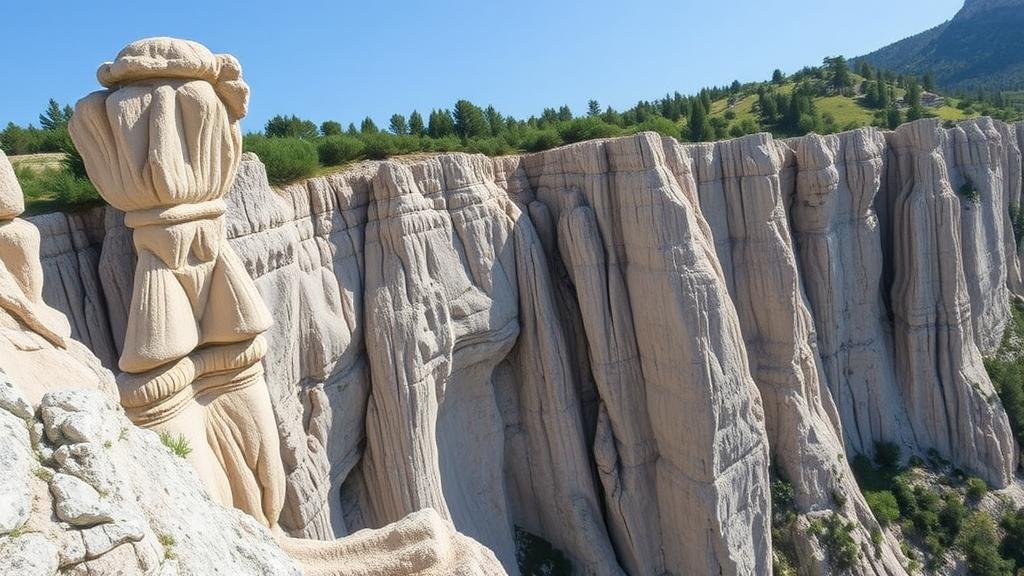Exploring the cliffs of Italy’s Dolomites for ammonite fossils embedded in limestone.
Exploring the Cliffs of Italy’s Dolomites for Ammonite Fossils Embedded in Limestone
The Dolomites, a UNESCO World Heritage site, are renowned not only for their stunning landscapes but also for their rich geological history. Rockhounds and mineral collectors are particularly drawn to this region to explore its limestone cliffs, which house a treasure trove of ammonite fossils. In this article, we will delve into the geological aspects of the Dolomites, the significance of ammonite fossils, and practical tips for collectors hoping to uncover these ancient relics.
The Geological Background of the Dolomites
The Dolomites are primarily composed of dolostone–a type of limestone enriched with magnesium. This unique composition is largely a result of sedimentation that occurred during the Triassic period, approximately 230 million years ago. During this time, marine environments thrived, leading to the deposition of various marine organisms, including ammonites. These ancient mollusks had coiled shells and are closely related to modern squid and octopuses.
Today, the Dolomites display dramatic cliffs and lush valleys, with elevations reaching up to 3,343 meters (10,962 feet) at their highest point, the Marmolada. combination of geological forces and glacial activity has exposed layers of limestone rich in fossils, making this area a hotspot for fossil hunting.
Understanding Ammonite Fossils
Ammonites are cephalopods whose fossils can vary in size from a few centimeters to over three feet in diameter. Their spiral shells often showcase intricate patterns, which serve not only as a means of identification but also as an aesthetic appeal for collectors. The fossilization process occurs when these marine creatures die and are buried under sediment. Over geological time, the shells undergo mineralization, transforming into the fossils we seek today.
- Global Significance: Ammonites are found worldwide and are used extensively in biostratigraphy, aiding geologists in understanding the relative ages of rock layers.
- Fossil Preservation: The conditions in limestone deposits of the Dolomites have facilitated the exceptional preservation of these fossils, providing insights into the marine ecosystems of the Triassic era.
Locations for Collecting Ammonite Fossils
While the entire Dolomites region is worthy of exploration, specific areas are known for abundant ammonite fossils. Here are some popular locations:
- Val di Fassa: Known for its stunning rock formations, this valley features several prominent cliffs where ammonites can be found embedded within exposed limestone.
- Val Gardena: This valley is another excellent site for collecting fossils, especially along hiking trails that lead to natural crags.
- Alpe di Siusi: Its fossil-rich limestone beds are easily accessible, making it a favored spot among beginners and experienced collectors alike.
Practical Tips for Collectors
If you are planning a fossil-hunting expedition in the Dolomites, consider the following tips to maximize your experience:
- Research Local Laws: Collecting fossils may be regulated by local laws, so it’s essential to research and obtain any necessary permits.
- Use the Right Tools: Equip yourself with a geological hammer, safety goggles, and a sturdy backpack to carry your finds. A field guidebook can also enhance your identification skills.
- Join Local Groups: Connecting with local fossil hunting clubs can provide valuable insights and advice from seasoned collectors.
- Respect the Environment: Practice Leave No Trace principles to preserve the beauty of the Dolomites for future visitors.
Conclusion
For rockhounds and mineral collectors, the Dolomites offer a unique opportunity to unearth ammonite fossils in a breathtaking setting. By understanding the geological context, recognizing the significance of these ancient creatures, and following practical tips, collectors can enhance their experience while contributing to our understanding of Earth’s history. Whether youre an experienced collector or a novice, the cliffs of the Dolomites hold the promise of adventure and discovery.



